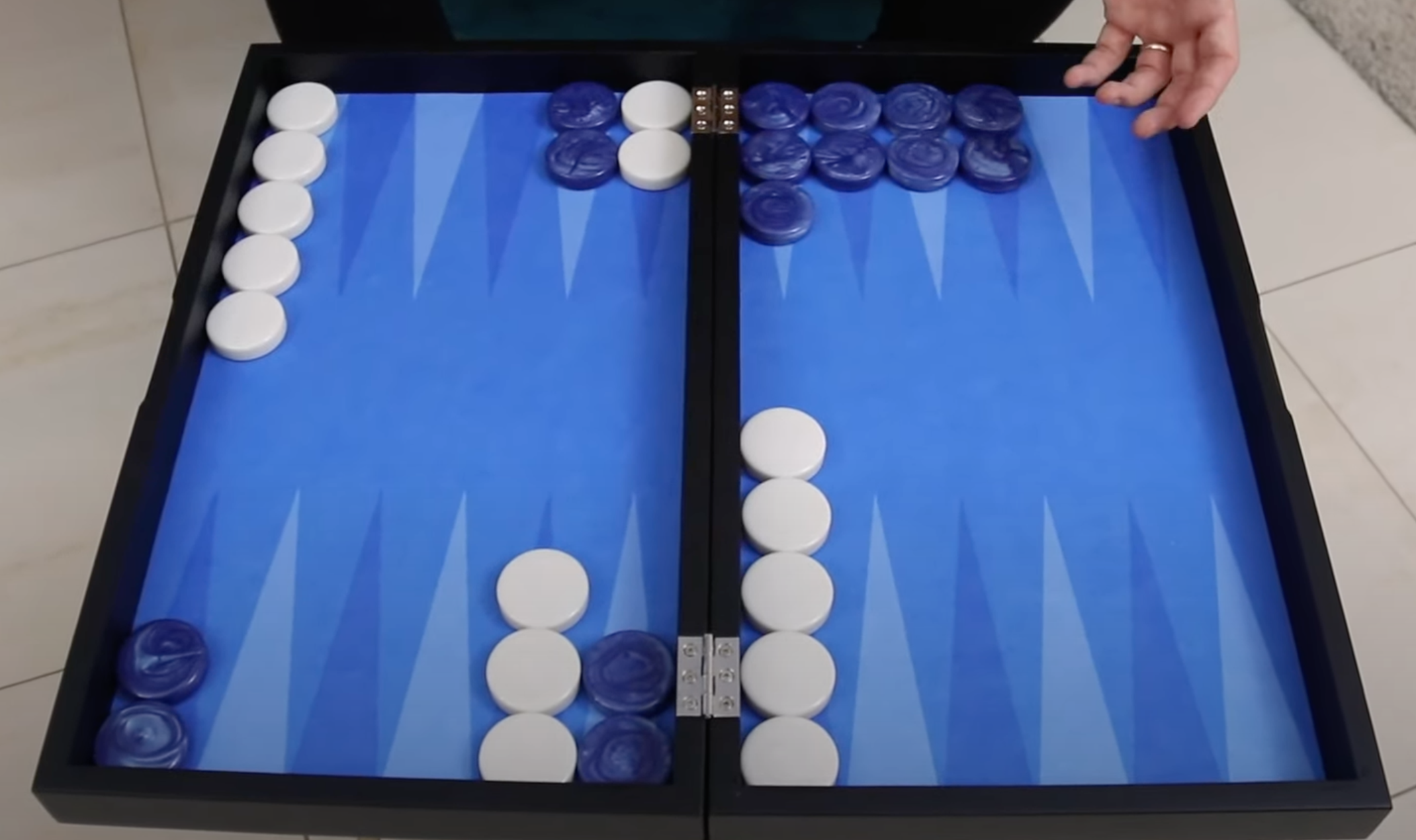Pips and Race
Hi there, backgammon fans! In this blog post, I will talk about pips. Let’s start right away!
What Is a Pip?
A pip is one unit of distance in the game of backgammon. Let’s have a look at this checker placed on the sixth point:
this checker has got six pips to go home. In other words, it has to move six pips in order to be borne off. So, this checker has a pip count of six.
The pip count is the total count of all the checkers for each player. In the opening position, each player has 167 pips to go. So, the back checkers over here on the 24 point:
since we call it the 24 point, that means that it has 24 points to go for these checkers to be borne off. Since there are two checkers, we need to multiply 24 by 2, which equals to 48 pips.
Up here on the 13 point, we got five checkers:
Therefore, we need to multiply 13 by 5, which equals to 65 pips.
Down here we got three checkers on the 8:
So, this would be 24 pips.
And here on the six point:
we've got five checkers, so that's six times five, 30 pips. A total of 167 pips.
For example, if this checker gets hit with a four here:
The white checker on the two point gets hit
it has to start all over. So, it just lost two pips and goes to the bar and has to re-enter.
The Strategic Implication of Pip Count
If the player that is ahead in the race (i.e. if he has fewer pips to go) can simply steal the game into a racing position with no more checkers getting hit, he will be a big favorite to win in an end game where it's just a race. The player who's down in the pip count needs to try to hit a checker to gain up in the race, or he can try to block his opponent's back checkers.
The race has a very important strategic feature in the game. Let me give you an example. Imagine that we have a position like this:
As we can see, blue is leading the race here because blue has fewer pips to go. White still has a lot of checkers out here in the outfield while blue already got a lot of his checkers into the inner board.
Let's say blue were to roll a double five in this position. Well, there's only one idea here, which is to race. Rule number one in backgammon theory: When you're ahead in the race, then race. So, the right play is to bring these checkers all the way home as far as possible:
What about the position below?
Here, it is white who’s leading in the race. If blue were to run in this position with double five:
it would be a blunder. Why? Because blue is down in the race. Therefore, blue needs to stay on his anchor and try to hit a shot. So, this would be a good play for blue:
Overall, this shows you how the race is actually the prime factor to decide on your strategy in the game. When you're ahead in the race, then race. If you're down in the race, stay back, try to hit a turnaround shot.
You can see the full video here!












